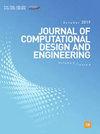Deep learning-based framework for monitoring wearing personal protective equipment on construction sites
IF 6.1
2区 工程技术
Q1 COMPUTER SCIENCE, INTERDISCIPLINARY APPLICATIONS
引用次数: 1
Abstract
The construction site is one of the most dangerous industries because the number of occupational injuries and fatalities is significantly higher compared to other industries. Proper use of personal protective equipment (PPE) by workers can reduce the risk of occupational injuries and fatalities. However, for a variety of reasons, workers tend not to wear their personal protective equipment properly. To address these issues, we propose a vision-based framework for monitoring wearing personal protective equipment. The developed framework is based on the real-time pixel-level detect model YOLACT, which employs MobileNetV3 as a backbone to lightweight the proposed framework. In addition, the framework uses DeepSORT of object tracking algorithm to interpolate frames not predicted by the model. The post-processing algorithm in our framework classifies the correlation between workers and PPE into four statuses based on the results predicted by YOLACT and the interpolated results from DeepSORT. The results showed that the fine-tuned model achieved 66.4 mAP50, and the algorithm successfully determined workers’ PPE-wearing status detection with 91.3% accuracy. This study shows the potential to prevent occupational injuries and reduce social costs by automating monitoring at construction sites in real-time.基于深度学习的建筑工地个人防护装备监测框架
建筑工地是最危险的行业之一,因为工伤和死亡人数明显高于其他行业。工人正确使用个人防护装备可以减少职业伤害和死亡的风险。然而,由于种种原因,工人往往没有正确佩戴个人防护装备。为了解决这些问题,我们提出了一个基于视觉的个人防护装备监测框架。所开发的框架基于实时像素级检测模型YOLACT,该模型采用MobileNetV3作为骨干来轻量级所提出的框架。此外,该框架还利用目标跟踪算法中的DeepSORT对模型未预测到的帧进行插值。我们框架中的后处理算法基于YOLACT预测的结果和DeepSORT插值的结果,将工人和PPE之间的相关性分为四种状态。结果表明,优化后的模型达到66.4 mAP50,该算法以91.3%的准确率成功确定了工人ppe佩戴状态检测。这项研究表明,通过在建筑工地进行实时自动化监控,可以预防职业伤害并降低社会成本。
本文章由计算机程序翻译,如有差异,请以英文原文为准。
求助全文
约1分钟内获得全文
求助全文
来源期刊

Journal of Computational Design and Engineering
Computer Science-Human-Computer Interaction
CiteScore
7.70
自引率
20.40%
发文量
125
期刊介绍:
Journal of Computational Design and Engineering is an international journal that aims to provide academia and industry with a venue for rapid publication of research papers reporting innovative computational methods and applications to achieve a major breakthrough, practical improvements, and bold new research directions within a wide range of design and engineering:
• Theory and its progress in computational advancement for design and engineering
• Development of computational framework to support large scale design and engineering
• Interaction issues among human, designed artifacts, and systems
• Knowledge-intensive technologies for intelligent and sustainable systems
• Emerging technology and convergence of technology fields presented with convincing design examples
• Educational issues for academia, practitioners, and future generation
• Proposal on new research directions as well as survey and retrospectives on mature field.
 求助内容:
求助内容: 应助结果提醒方式:
应助结果提醒方式:


